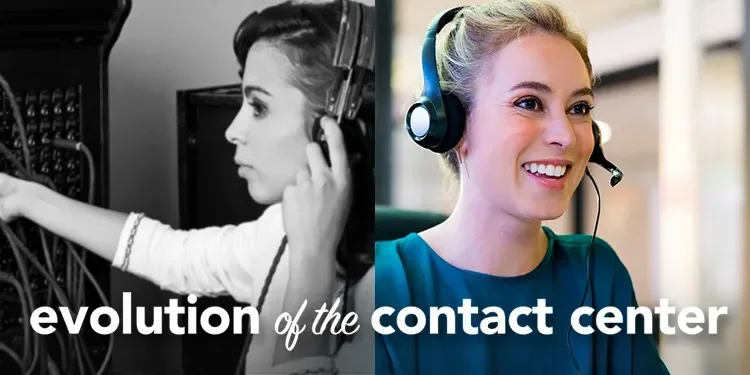
Summer Series: Welcome to the Evolution of the Contact Center [Part 1]
When Yellow Pages told us to “let our fingers do the walking,” we listened. We stopped walking miles to get our answers and we started dialing. What time do you open? Do you carry light bulbs? How much do they cost? Call center agents were there to answer our basic FAQ’s- and they still are. Today, voice remains the preferred method of communication at 54%. However, to keep up with changing expectations, companies have presented consumers with multiple communication channels from email to social media. But this didn’t happen overnight...
In the 1980’s, the introduction of Interactive Voice Response (IVR) allowed customers to solve their problems with the press of a button- literally. Although to be fair it was many buttons to solve a problem. I remember paying the few bills I had when living at home with the Bank of America touch tone bill pay application. My father looked curiously at me and was surprised that I was paying my bills with a touch tone application.
The 1990’s brought the World Wide Web into our homes, and the dulcet tones of modems establishing a connection. Suddenly customer service was no longer limited to the call center. The internet presented a new channel for customers to interact with companies, as well as with each other. In fact, at that time I worked for a company called Edify who had a packaged web banking product, in addition to their IVR. It was used by many of the top banks including Chase.
During the early 2000’s, channels like chat and email made their way into the call center, transforming it into a contact center and allowing customers to send email or kick off a chat from the company website. Later in that decade social media and mobile changed the way companies interacted with their customers and democratized the customers voice related to substandard service. Roles reversed meaning brands were no longer in control of communication. Customers began taking their inquiries and issues to public platforms, forcing companies to keep up with consumer expectations. Today, there are more mobile devices than there are people in the world. The number of transactions and customer interactions taking place from a mobile phone will continue to rise, albeit at a slower pace as smart phones continue to sell around the world.
More recently, cloud technology has taken off. Consumers want to communicate on their terms, and they expect you to “know me.” In an effort to meet these expectations, companies are waving goodbye to on-premises solutions. Frequent software updates, reduced setup and infrastructure, reliability, and prebuilt integrations into CRM systems are just a few of the reasons enterprises have begun to make the switch. The latest introduction of artificial intelligence (AI) in the cloud contact center is bringing customers a smarter, and personalized customer experience.
You might be wondering, why does this matter? In order to appreciate where we’re going, it’s important to look at how we got here. Over the next six weeks, we are going to reflect on the evolution of the contact center and take a peek into what the future holds.



